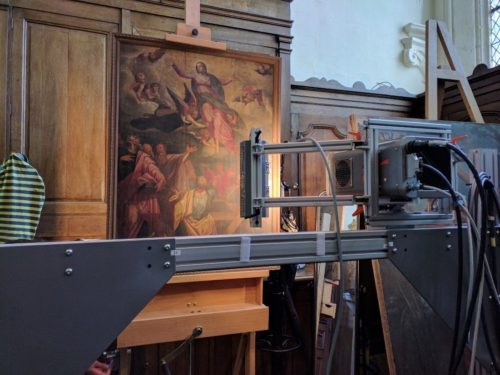
Riksantikvarieämbetet was represented at the 2nd IPERION CH Training Camp in Provins, France from 19 – 23 March, 2018. Organized by the French Laboratory of Research on Historical Buildings (LRMH) and the French National Centre for Scientific Research (CNRS), the Training Camp focused on educating conservators and heritage scientists on the theory and practical use of seven different mobile instruments designed for non-invasive analysis of cultural heritage. The week-long course took place entirely within the St. Ayoul Church, which provided case study material for each technique. The tools used are briefly described below.
The Training Camp is part of the IPERION CH consortium (Integrated Platform for the European Research Infrastructure ON cultural Heritage), which intends to establish a multinational infrastructure of heritage science research. One major goal of IPERION CH is to provide access to scientific techniques for cultural heritage analysis. Many of these techniques are portable and are part of the MObile LABoratory network, or MOLAB. Another major goal is to provide educational outreach in the form of hands-on instrument training. All of the analytical techniques used during the 2018 Training Camp are part of the MOLAB network, and each instrument is maintained and operated by its own dedicated research group.
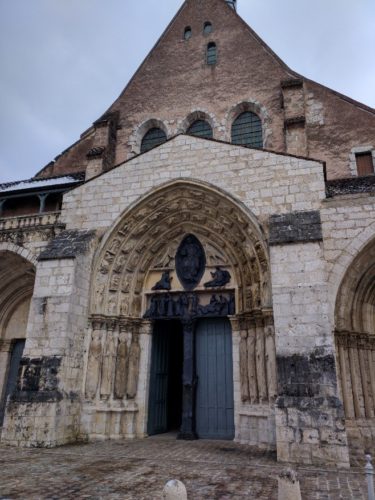
The course was divided into lectures and practical hands-on sessions for each instrument. On the first day, each research group gave a short presentation on the theory behind its respective MOLAB tool. As many of these techniques are not found in typical conservation or scientific research laboratories, the presentations were necessary to establish a solid general understanding of their principles and applications. For the remaining days of the course, the students were divided into small groups and rotated to different stations within the St. Ayoul Church. Each station focused on one particular instrument as well as a single case study in the church, providing the students with practical information on the setup, data collection, and post-processing analysis for each tool. The data collected during these case studies will help with conservation efforts of the church.
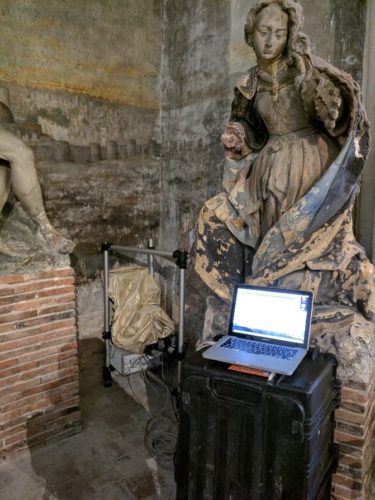
Mobile Nuclear Magnetic Resonance (NMR MOUSE) is from a research group at RWTH Aachen University in Germany and was used to assess water content in the walls of the church. Rising water and soil levels in Provins has led to noticeable water damage in parts of St. Ayoul. Using a permanent magnet and a radiofrequency coil, NMR MOUSE can provide non-invasive information on the distribution and nature of water in a material up to a depth of 25 millimeters beneath the surface. Such data indicates if the water is bound to the material (the church wall, in this case) or if it is free and can therefore be dried. NMR MOUSE can also indicate the presence of different material layers such as varnishes, binders, and paints, but does not provide chemical characterization.

Digital Holographic Speckle Pattern Interferometry (DHSPI) is from the Foundation for Research and Technology (FORTH) Institute of Electronic Structure and Laser (IESL) in Greece. During analysis, a laser is reflected off an object and subsequently collected by the instrument. This laser provides information on active surface defects such as propagating cracks, and was used to assess the condition of a wall painting affected by water in St Ayoul. The DHSPI software produces real-time constructive and destructive interference patterns from the laser, and breaks in these patterns indicate the presence of active surface defects. DHSPI can also be used to determine the effects of temperature, relative humidity, pollution, vibrations, and loans on objects.
Terahertz Time Domain Imaging (THz-TDI) is from the Center for Research on Preservation (CRC) in France and can image sub-surface layers of an object. Using terahertz radiation, this technique allows for the non-invasive imaging and depth profiling of materials and layers that cannot be seen with infrared or x-ray sources. Examples of use include the identification and depth determination of a sub-surface gold leaf layer on a wall painting, and the imaging of paint and adhesive interfaces in multi-layered canvases.
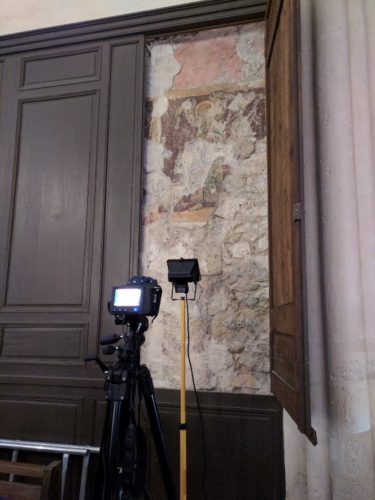
Stimulated Infrared Thermography (SIRT) is from CRC and involves lightly radiating an object with a heat generating light source, then imaging the diffusion of heat with an infrared camera. As different materials diffuse heat differently, this visual map provides information on the locations of sub-surface voids and air pockets in an object. The presence of an air pocket may indicate that parts of the object surface are beginning to detach from the bulk. Fragile wall paintings line the St. Ayoul Church, and SIRT helped to determine areas of the walls containing air pockets that may require stabilization treatment.
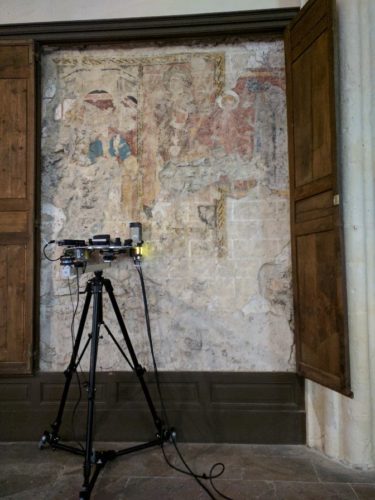
Integrated X-Ray Diffraction and Fluorescence (XRD-XRF) is from Centre de Recherche et de Restauration des Musees de France (C2RMF). It combines two analytical techniques that are commonly used in heritage science research (XRD and XRF) to analyze the elemental composition and crystalline structure of materials. Both techniques are compact and portable as they are placed on a platform supported by a tripod, and both use the same x-ray source. For the St. Ayoul case study, the XRD-XRF device was used to identify pigments in the fragile wall paintings.
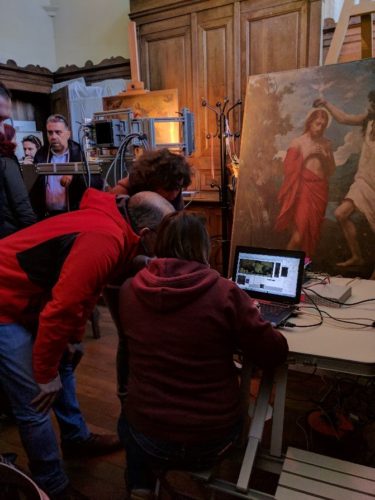
Near Infrared Hyperspectral Imaging (HSI) is from CRC and was used to image a wooden panel painting to determine areas where the painting had been treated. Using an infrared light source, camera, and an imaging spectrometer, HSI scans a large segment of the object using a pushbroom scanner, collecting a spectrum for each pixel of the imaged object. As many pigments are transparent to infrared light, this technique helps to view subsurface layers on paintings, such as underdrawings. HSI may also be performed using a visible light source which gives information on colorimetric data of an object. This can ultimately be used to monitor color changes of an object over time.
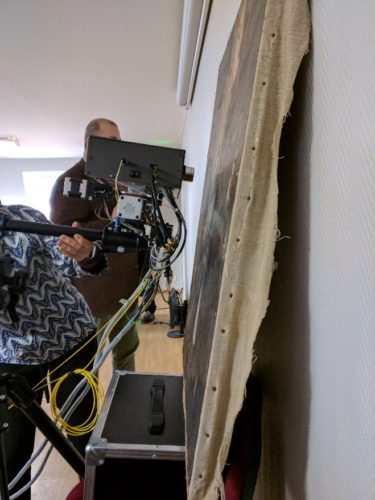
Optical Coherence Tomography (OCT) is from a research group at Nicolaus Copernicus University in Poland. An infrared light source is used to illuminate an object and an interferometer assesses the light reflected back into the instrument. This reflectance data provides information on the distance of an interface from the instrument. In practice, it is used to non-destructively observe layered structures like varnished paintings and was employed to calculate varnish thicknesses in different areas of an easel painting in St. Ayoul. OCT can also be used to observe underdrawings, glazed ceramics, and real-time cleaning processes.
The IPERION CH Training Camp was an excellent opportunity to learn more about fascinating portable techniques for cultural heritage analysis. While these instruments are not common laboratory tools, the MOLAB network allows institutions to submit proposals for projects that require such specialized on-site analysis. More information about MOLAB and the proposals can be found through the IPERION CH website: http://www.iperionch.eu/molab/.